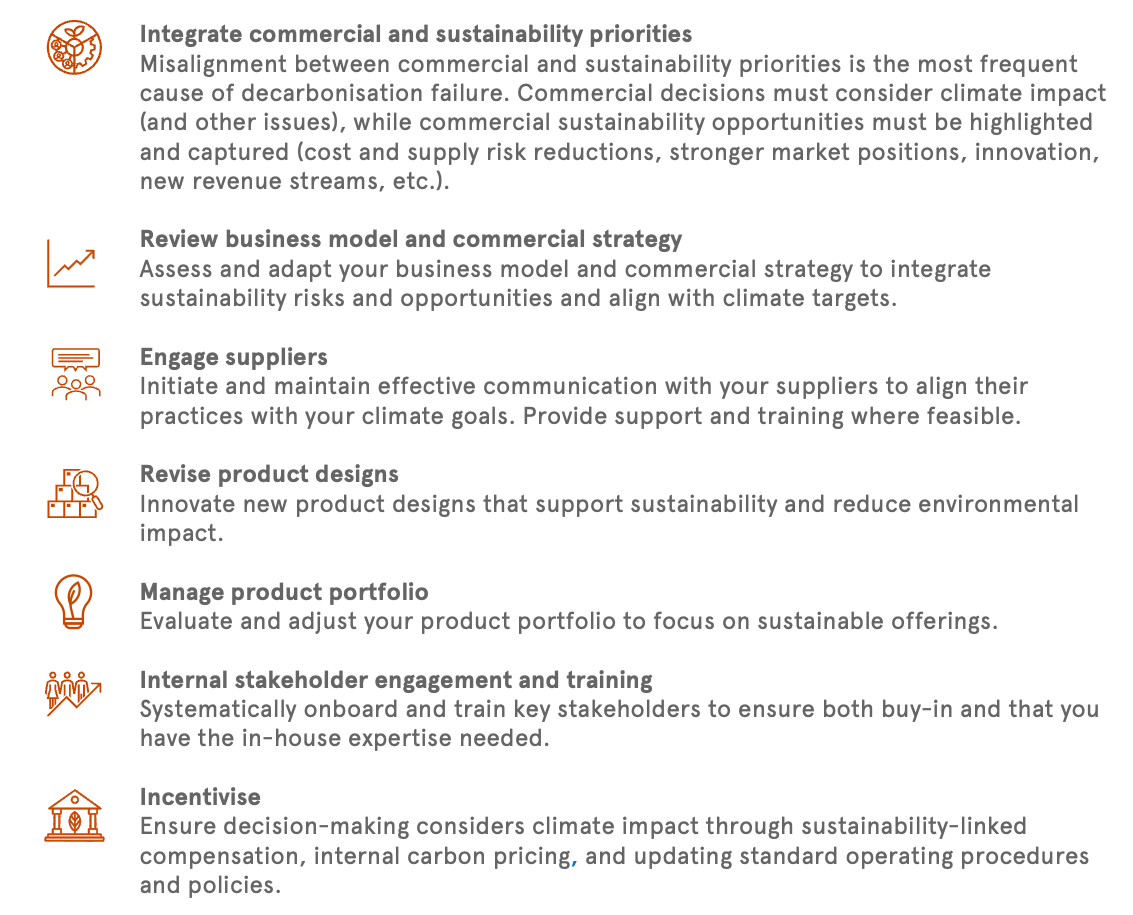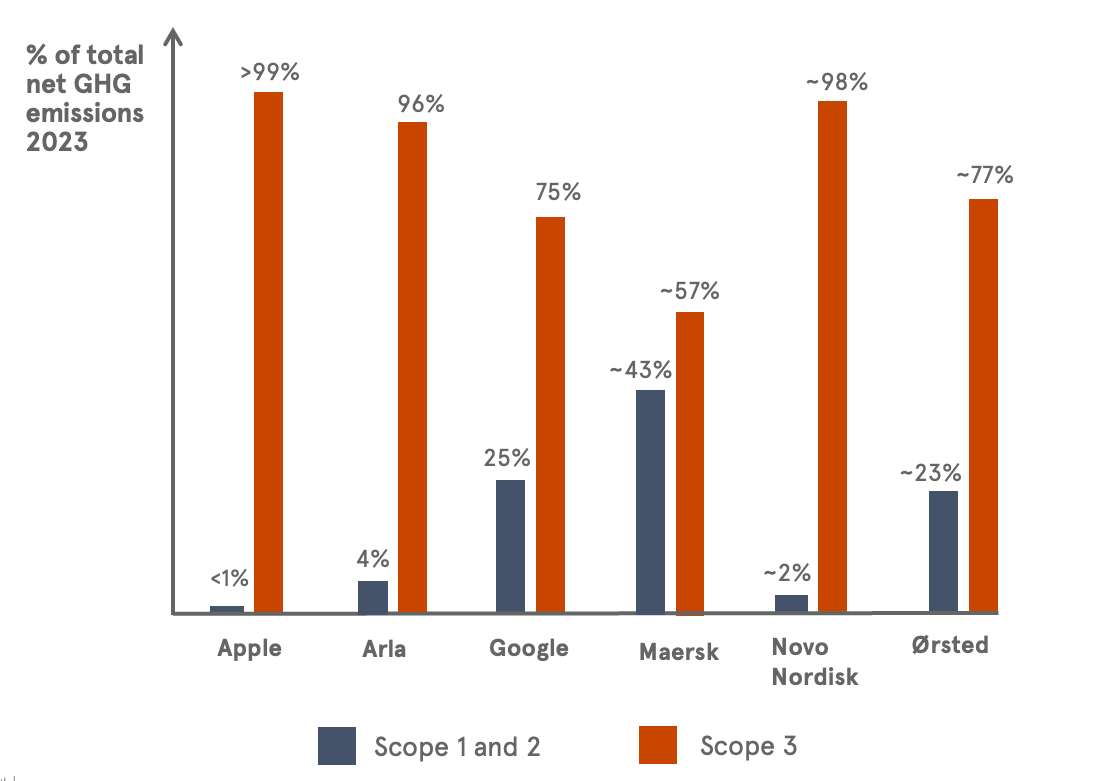
In response to the ongoing climate crisis and lack of adequate action, the EU has introduced stricter legislative requirements. Currently, large companies must publicly disclose their climate impact and their plans for addressing it under the CSRD. However, disclosure doesn’t require action – but by 2027, very large companies must have adopted and deployed a climate transition plan. The plan must align with the UN’s 1.5°C mitigation pathway and follow specific requirements of the new sustainability due diligence directive (CSDDD). Few companies have such a plan, and even fewer have one that meets the requirements. This article provides a short overview and a ‘how-to-guide’ based on our concrete experiences with large and medium-sized companies.
From reporting to action – how the CSRD and CSDDD are connected
The CSRD requires companies to disclose their climate impacts (now and forecasted), risks, targets, and the measures they have in place to mitigate these impacts and risks. The purpose of the CSRD is to create transparency through reporting. The CSDDD complements the CSRD by requiring larger companies to conduct due diligence and mitigate adverse impacts (impacts will also be identified when reporting under CSRD).
As climate change will be material to most companies, the CSDDD also requires companies to have a climate transition plan in place (§22) – i.e. companies must mitigate their GHG emissions. This also includes financial undertakings that are otherwise mostly exempted from the CSDDD.
Climate transition plan – the §22 requirements of the CSDDD
Climate change is one of the biggest threats to our economy and society. Hence, the EU has added climate action to the due diligence framework. The CSDDD requires companies to adopt, deploy and monitor a climate transition plan and update it annually.
The plan must contain the following elements:
- Targets
Time-bound targets for 2030 and in five-year steps up to 2050 based on conclusive scientific evidence and, where appropriate, absolute emission reduction targets for greenhouse gas for scope 1, scope 2 and scope 3 greenhouse gas emissions for each significant category - Actions
A description of the decarbonisation levers identified, and key actions planned to reach the targets, including, where appropriate, changes in the product and service portfolio of the company and the adoption of new technologies - Funding and investment
An explanation and quantification of the investments and funding supporting the implementation of the transition plan for climate change mitigation - Governance
A description of the administrative, management, and supervisory bodies’ roles in adopting and monitoring the transition plan for climate change mitigation
The 5 steps of a climate transition plan
The EU does not prescribe the process for how to develop a climate plan, but we recommend going through the following five steps:
- GHG baseline
Make a comprehensive GHG inventory (covering scopes 1, 2 and 3) and update it annually or more frequently. - Climate targets setting
Model and quantify how much your company must reduce its carbon footprint required to be in line with the 1.5oC pathway, as well as net-zero in 2050. Don’t forget to include how you plan to grow the company and/or adjust the product portfolio or business model in the same period. - Business risks and hotspot identification
Conduct a risk assessment on physical and transitional risks posed by climate change. This phase will enable the company to understand the financial risks arising from climate change. Analysing business risks and the GHG inventory will highlight high-priority decarbonisation levers. - Action planning
Assess the impact of decarbonisation initiatives and plan what would be needed to implement them (e.g. allocated costs and investments, internal structures and resources etc.). - Implement, monitor and adjust
Implement the decarbonisation initiatives and monitor progress to ensure that both near- and long-term targets are within reach. Expect that you cannot predict precisely how the market will develop over time; instead, you will continuously monitor, learn, and regularly adjust the plan.
Buying green energy won’t be enough
Historically, GHG mitigation has been achieved through energy efficiency and green energy transition in companies’ own operations. While these are necessary steps, more transformative action is needed. Consumption-based emissions (scope 3) usually account for ~90% of companies’ climate impact and are much more complex to address. It entails energy transition in your supply chain, adjusting your product and service portfolio, switching to low-impact materials and components (e.g., reused, recycled, regenerative materials), and adjusting your business model (e.g., reducing product output by replacing them with services such as maintenance, take-back schemes, and refurbishment).
Key strategies to effectively develop and deploy your climate transition plan to maximise results:

At Nordic Sustainability, we have extensive experience assisting clients in understanding their climate impact, setting targets, and developing action plans. To learn more about climate transition plans and due diligence, reach out to our in-house experts:
Ole Høy Jakobsen, Principal
Anniina Kristinsson, Managing Partner
Read more
Legislation
Climate
Mandatory sustainability due diligence: A catalyst for change
Deepen your knowledge of CSDDD requirements through our explainer





